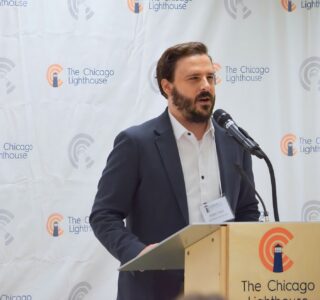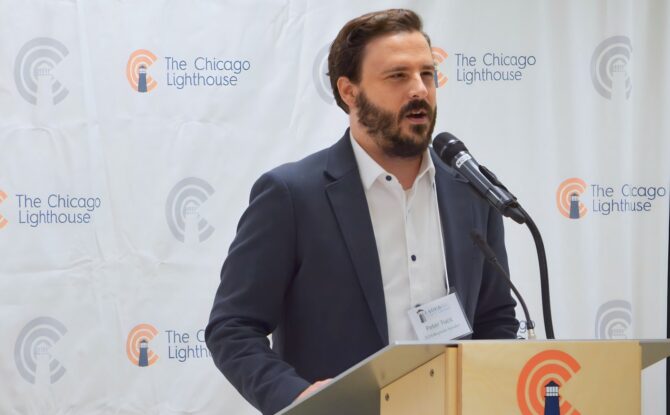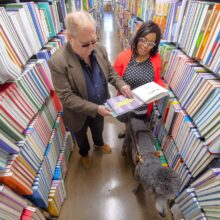
There and Back Again: Peter Tucic Returns to Lead the IIMC
Peter Tucic knows how important the Illinois Instructional Materials Center is for students who are blind or visually impaired. As a public school student, Peter himself received materials and devices through the IIMC to ensure he could learn and thrive among his peers throughout his educational journey.
“There’s no doubt in my mind it takes a village,” Peter says. “My village comprised wonderful teachers of the visually impaired, orientation and mobility specialists, my parents, great teachers, accessible transportation, and all sorts of things. The Illinois Instructional Materials Center was 100% part of that equation, and the reason why is because, through it, I could get any piece of technology I needed to be successful.”
Now, as Vice President of the Illinois Instructional Materials Center and Public Advocacy at The Chicago Lighthouse, Peter will be part of countless villages as he helps provide materials and devices to students who are blind or visually impaired throughout the state and advocates for public policies that benefit individuals with all types of disabilities.
Peter’s position is his second go-around at The Chicago Lighthouse. He had previously worked on The Lighthouse’s national assistive technology help desk before joining the assistive technology company HumanWare. Now back at his old haunt, Peter is looking forward to making a broader impact.
Why is the Illinois Instructional Materials Center so important for students with visual impairments?
We’re one of only two states in the country that has a true instructional materials center. The other states have libraries that can loan out equipment that has to be returned, or they rely on the individual districts to purchase materials or devices. That can be an issue when you’re looking at spending thousands of dollars on specialized technology that may not be in the district’s budget. There are ways around that, certainly, but it can be a much bigger fight. In Illinois, a teacher can say, “I would like these products,” and generally speaking, we can get them for any student. We can purchase virtually any product in the classroom, ranging from Braille to highly specialized low vision technology.
In addition to overseeing the IIMC, you have a role in public advocacy. What is your vision for that?
That, to me, is extremely exciting because it’s such a challenge and something so new to me. I mean, I’ve done all sorts of self-advocacy over the years. I’ve been to Congress and have been a part of various efforts on Capitol Hill, but this will be an opportunity to really help the blind, low vision, veteran, disabled communities both internally here at the lighthouse and externally in the in the Chicagoland area and nationally. I’ll be getting involved with issues impacting our community right now. Front and center is transportation because we all take transportation in some form. There are also a couple of bills related to assistive technology and Social Security that are currently working their way through Congress that I think our community should be aware of. You know, we’re all working. We all have things to do. We have lives to live. So, if there are ways that we can just keep the low vision, disabled and Veteran communities both inside and outside The Lighthouse informed about some of these issues, that could be a big help.
How will your work outside The Lighthouse help in these new roles?
When I was at HumanWare, I traveled all over the country and the world, and what that did is it opened me up to the goings on in every single state in this country. From some of the most affluent areas to some of the most rural or underserved areas. What I was able to do though was understand what kiddos are going through in the classrooms all across the country. I was also able to build a network here in Illinois, nationally and also with other blindness institutions and organizations like the American Council of the Blind, the National Federation of the Blind, the American Foundation for the Blind, the National Library Service, the American Printing House, and others. That helps me a lot in this role in helping make informed decisions or suggesting how a teacher might be successful with a different product or device, or even knowing what’s coming.



